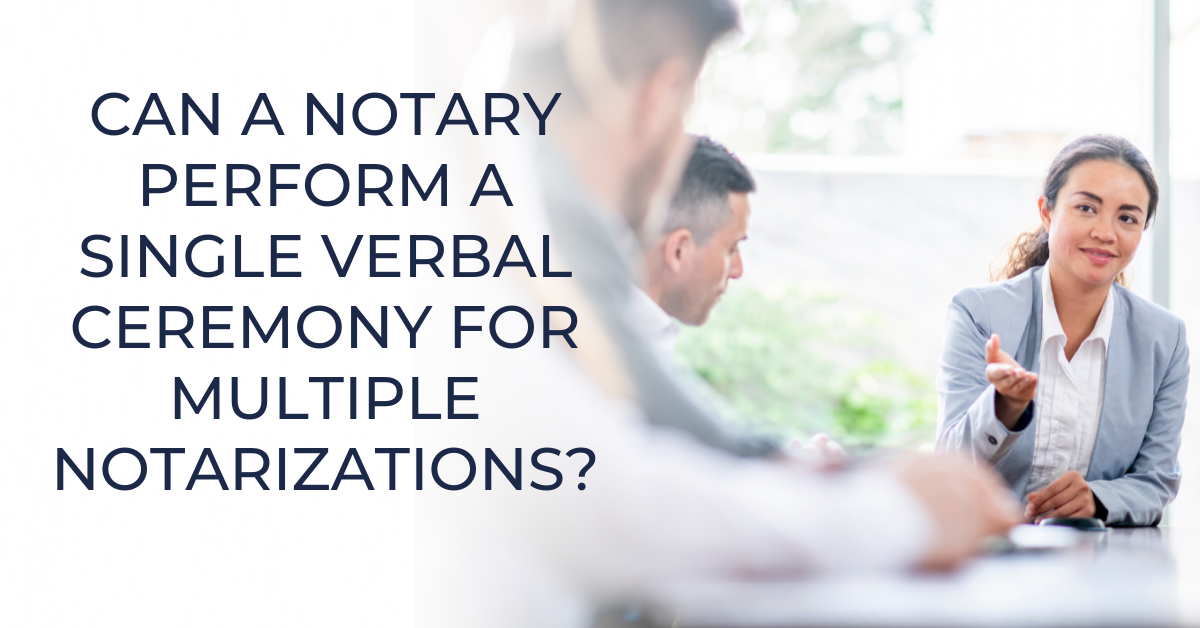Notary Public Underwriters Blog
Can a Notary Perform a Single Verbal Ceremony for Multiple Notarizations?
- Details
- Published: October 21, 2024

“If I’m notarizing multiple documents, can I perform one ‘blanket’ verbal ceremony or do I need to perform it for every document?”
A notary must perform a notarial-act verbal ceremony for each signature the notary notarizes. Whether the multiple signatures occur in one document or in several documents, each signature to be notarized requires a separate and complete notarial act, including making the appropriate notarial certificate and performing the appropriate verbal ceremony.
The verbal ceremony to be performed depends on the notarial act.
- For an oath/affirmation (verification, jurat): “Do you solemnly swear that the contents of this document are true, so help you God?” Or (as applicable), “Do you affirm the contents of this document are true?”
- For an acknowledgment: “Do you acknowledge signing this document willingly, for the purposes stated in it?”
________
TIP: Remember that, in states that authorize it, notaries performing the notarial act called a “signature witnessing” need not perform a verbal ceremony.
The requirement that a signature shall be notarized is indicated by a notarial certificate, next to or following the principal’s signature or provided on a separate sheet.
Examples:
- A single 10-page document contains two places for the named signer’s signature. Each signature space is accompanied by a notarial certificate for the desired signature notarial act. The notary performs two separate notarial acts, and performs the appropriate verbal ceremony for each notarial act.
- A single named signer presents a notary with two separate documents, each of which requires the signer’s signature to be notarized. The notary performs two separate notarial acts, including the appropriate verbal ceremony for the notarial act indicated on each document.
Sometimes, there’s no notarial certificate provided on or with a document, but the principal clearly wishes to have their signature notarized. The notary must obtain the signer’s input on which notarial act they wish to be performed, then the notary writes the missing certificate language on the document or attaches the certificate language using a separate-sheet, “loose” notarial certificate.
Related Article(s)
Can I Notarize When the Person Has No ID?
Does a Notary Need to See the Entire Document When Notarizing?
Can I Notarize a Document That Is Already Signed?
How to Assess Signer Awareness or Coercion
Should the Date on the Notarial Certificate Match the Date That the Notarized Document Was Signed?
What Should I Do When There's No Room for My Notary Stamp?
How to Notarize Signatures on Handwritten Documents
Can I Notarize a Document in a Language I Don’t Know?
Can a Notary Change a Document’s Date?
